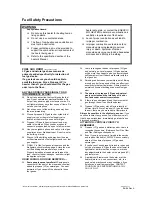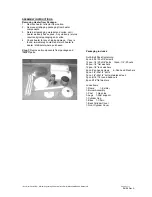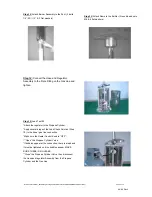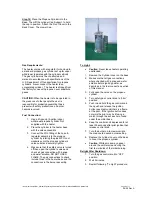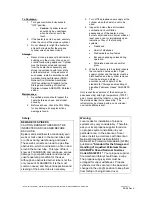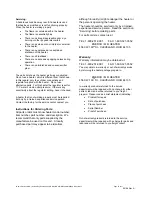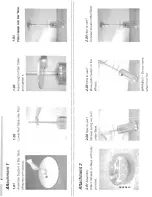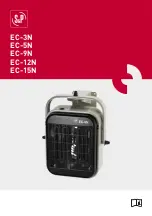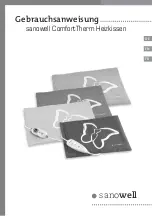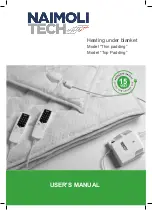
To Shutdown:
1. Turn gas control knob clockwise to
“OFF” position.
o
Caution
: Cylinder removal
should only be undertaken
when heater is cool to the
touch.
2. If the heater is not to be used, securely
close the valve at the propane cylinder.
3. Do not attempt to relight the heater for
at least 5 minutes after the propane
cylinder valve has been closed.
Storage:
•
Never store a propane cylinder inside a
building or in the vicinity of any gas, oil
or solid fuel-burning appliance. Cylinder
must be disconnected and removed
from the heater base assembly and
stored in accordance with local, state
and federal codes. In the absents of
such codes, install in accordance with
American National Standard (ANSI) /
National Fire Protection Association
(NFPA) publication “Standard for the
Storage and Handling of Liquefied
Petroleum Gases ANSI/NFPA 58-latest
edition
Maintenance:
1. A qualified person should inspect the
heater before each use, and at least
annually.
2. Before each use, check the POL fitting
for any damage, and replace if any
damage is found.
3. Turn off the propane vapor supply at the
cylinder when the heater is not to be
used.
4. Inspect and clean the air circulation,
combustion and ventilation
passageways of the heater, burner,
burner venturi and main burner orifice at
least once a year or immediately upon
indication of any of the following
systems:
•
Flashback.
•
Smell of aldehydes.
•
Predominate
yellow
fames.
•
Excessive popping noises during
operation.
•
Diminished and uneven emitter
glow.
5. When the heater is to be stored indoors,
the connection between the LP-gas
supply cylinder and the heater must be
disconnected and the cylinder removed
from the heater and stored in
accordance with chapter 5 of the
standard for “Storage and Handling of
Liquefied Petroleum Gases” ANSI/NFPA
58.
Only recoat those portions of the heater (post,
base assembly) with high temperature (1200
o
F)
paint. Never paint the reflector, or any portion of
the stainless steel burner assembly. The
reflector may be cleaned with a non-corrosive /
non-combustible product.
Safety:
BEWARE OF SPIDERS
CAUTION: BURNER TUBES MUST BE
INSPECTED AND CLEANED BEFORE
EACH USE.
Spiders and small insects occasionally spin
webs or make nests in the burner tubes and
or orifices during warehousing and transit.
These webs or nests can lead to a gas flow
obstruction, which could result in a fire in and
around the burner tube. This type of fire is
know as FLASHBACK and can cause serious
damage to your patio heater and creates an
unsafe operating condition for the user.
Although an obstructed burner tube is not the
only cause of FLASHBACK, it is the most
common cause, and frequent inspections and
cleaning of the burner tube is necessary.
Warning:
Local codes for installation of propane
systems may very considerably. Therefore,
ask your local propane supplier for advice
on propane system installation in your
particular area. In the absence of local
codes, install in accordance with American
National Standards Institute (ANSI) /
National Fire Protection Association (NFPA)
publication
“Standard for the Storage and
Handling of Liquefied Petroleum Gases
ANSI/NFPA 58 and National Fuel Gas
Code ANSI Z223.1.”
Your propane supplier,
fire marshal or library should have a copy.
The propane supply system must be
arranged for vapor withdrawal. Propane
cylinders must be secured in the base and
changed in the upright position to keep them
from falling or being knocked over.
\\Commserv\Users\EGI_Shared\Engineering\Labels & Manuals WIP\MH40PH\MH40PH Manual.doc
Page 9 of 11
06/08 Rev A
Summary of Contents for MH40PH
Page 12: ...06 08 Rev A...



